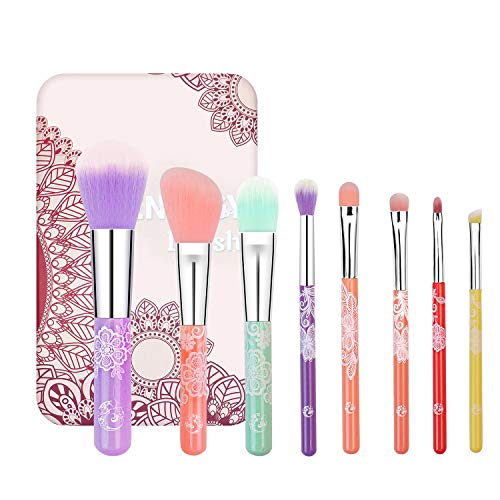I have the same problem. I've gotten my skin under control, now I have to deal with the pesky marks left behind. And I considered lactic and glycolic peels, asked tons of questions and read up on what they do. Ultimately what I figured is if you're dark skinned, like you and me, you should be very very wary of doing peels at home. If you HAVE to, go with lactic because it's recommended for sensitive skin, and is less likely to burn and cause MORE hyperpigmentation.
A product I'm really interested in getting is MaMa Lotion (sold at
skincarerx.com) which has mandelic and malic acid, and they supposedly work as well as glycolic and lactic acids, only are much safer for dark skin. And if you look at the reviews on the site, they're kind of crazy.
Also, I tried Avon's 2-Step Peel that has a 10% glycolic acid concentration, and it worked really nicely, although it took a while for the marks to disappear.
You should read this helpful info someone else shared with me a while ago on MUT:
Does Pigmented Skin Need Special Care?
The difference in darker pigmented skin is due to the way melanin is distributed and not to the number of melanocyte cells that produce the melanin. It is easy to overstimulate the melanocyte of persons of color to react and hyperpigment. It is not special care, it is just recognizing the products and ingredients that can harm pigmented skin.
What Products Should Be Avoided?
Most anti-aging skin care, such as alpha hydroxy acids( with the exception of mandelic acid), hydroquinone, and tretinoin pose the risk of hyperpigmentation when used on darker skin types. Because of the distribution of melanocytes in darker skin types, irritation and swelling can cause the melanacytes to react and produce pigment. When this happens, it can cause dark pigmented spots appear. It is commonly known as post-inflammatory hyperpigmentation. This does not happen on everyone. Many people with darker skin tones have been able to use glycolic acid, hydroquinone, and tretinoin without any adverse effects. It is a precaution that those with more sensitive skin should be aware of.
Mandelic Acid, a less irritating alpha hydroxy acid, has been tested and proved to be safe on pigmented skin. This system is great for oily and acne prone skin as well as combination skin. It helps prevent breakouts without drying out the skin and smoothes out fine lines and evening out skin tone. Also recommended for use on melasma or rosacea.
Kinerase® also came up with a good alternative to Renova® and Retin-A® that has been tested safely on all skin types. This product helps smooth fine lines and wrinkles, as well as even out pigmentation problems. Great for dry and normal skin. Lotion can be used on oily skin as a moisturizer. All products are non-comedogenic.
Neova® uses the wound healing capabilites of copper to heal the damage done by time. Copper is an essential element in the process of tissue repair. The regular application (just once a day at night) can help stimulate collagen growth, providing smoother, firmer, younger looking skin in just half the time of regular anti-aging therapies. However, it does not help even out pigmentation problems. It can be used with any regular skin care routine, just use it as a light moisturizer. Try using it at night, with the mandelic acid or Kinerase® in the morning.
Who is Considered to have "Pigmented Skin"?
The risk of hyperpigmentation occurs in skin types IV and up. This skin type tans easily and rarely, if ever, burns. This skin type is common among Asian, Mediterranean, Polynesian, African, Native American, Hispanic, Arabian, and Eastern European peoples.
SOURCE




































